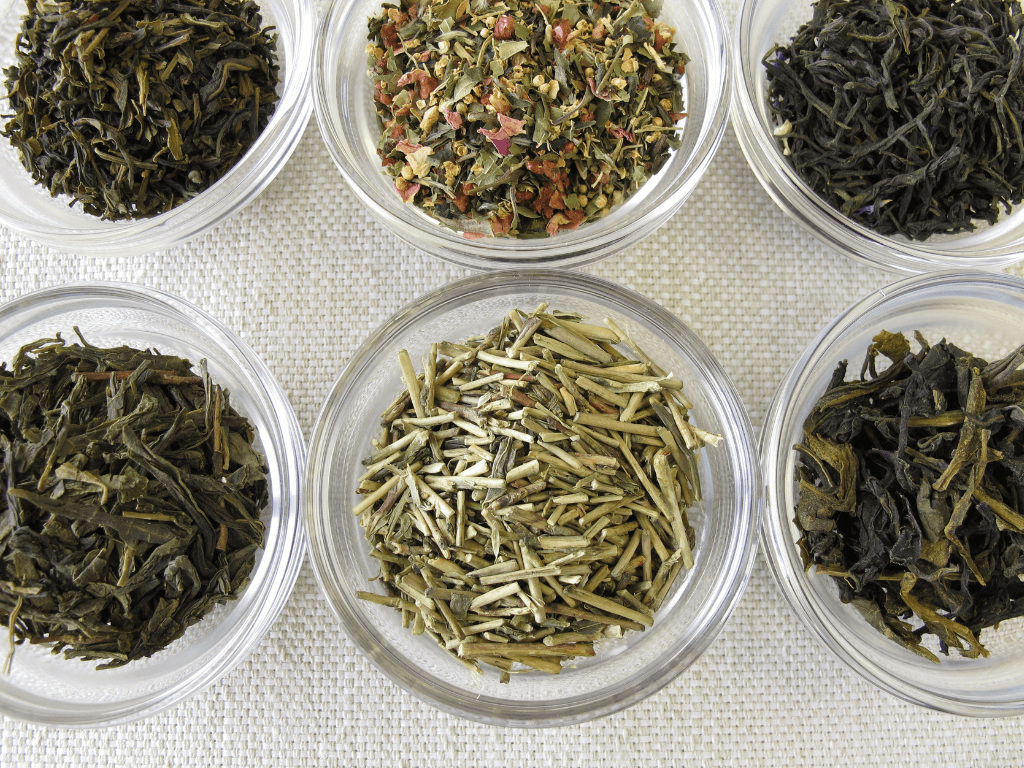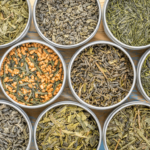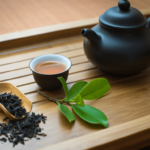Exploring the Wide Range of Green Tea Varieties: A Comprehensive Guide

Welcome to our comprehensive guide on the different types of green tea available and how to explore them. Green tea has been a popular beverage in many cultures for centuries, known for its unique flavor and numerous health benefits. In this guide, we will delve into the origins and health benefits of green tea, explore the popular green tea varieties and their unique characteristics, discuss ideal brewing temperatures for white and green teas, and evaluate methods for identifying superior tea varieties. Whether you're a seasoned green tea enthusiast or a curious beginner, this guide will provide you with all the information you need to expand your knowledge of green tea. So sit back, relax, and prepare to embark on a journey through the world of green tea.
Introduction to Green Tea
The Camellia sinensis plant is the source of an ancient beverage consumed around the globe. Through steaming or pan-frying, the tea leaves are preserved and take on their signature green color, flavor, and aroma. Across millennia, green tea has been a hallmark of different cultures and customs. This article dives into the different varieties of this beloved drink and provides a comprehensive introduction to the world of tea leaves.
A plentiful source of antioxidants, green tea offers a range of health advantages, including the potential to reduce the occurrence of heart disease, enhance brain function, and aid in weight loss. There are many types of green tea to choose from, such as matcha, sencha, and hojicha, each with its own distinctive flavor and scent. In the following sections, we will examine the features of each of these varieties and discover what makes them so unique.
Types of Green Tea
When it comes to exploring the world of tea, there are numerous varieties to choose from, each with its own unique flavor and characteristics. Amongst these are sencha, matcha, gyokuro, and bancha. Sencha is the most consumed type of tea in Japan and is made by steeping whole tea leaves in hot water. Matcha, on the other hand, is a finely ground powder that is whisked with hot water to create a frothy beverage. Gyokuro is a high-quality tea grown in the shade to accentuate its flavor, while bancha is a lower-grade tea made from aged leaves. In the end, sampling the various types of tea is an exciting journey.
Another brew that is worth a try is genmaicha, which is a blend of roasted brown rice and green tea. Additionally, hojicha is a roasted tea that has a smoky and earthy flavor. Kukicha, made from the stems and stalks of the tea plant, is also gaining popularity for its mild and slightly sweet taste. In the end, these different types of tea offer a wide range of flavors and aromas.
Finally, tea can be used for more than just drinking. For instance, tea leaves can be added to smoothies or used as a seasoning for dishes. Tea can also be utilized to naturally dye fabrics and paper. Furthermore, some types of tea, such as matcha, are great for beauty products due to their rich antioxidant content. In conclusion, exploring the various types of tea can open up a plethora of possibilities beyond simply sipping a hot cup.
Japanese Green Tea
A unique beverage that has gained widespread recognition among tea connoisseurs, Japanese tea is known for its distinctive flavor and aroma. Since its cultivation and processing have been honed through centuries of tradition, the country is now home to a vast selection of teas, including sencha, gyokuro, and hojicha. Of these, hojicha stands out for its strikingly nutty and caramel-like taste, making it an ideal option for those who prefer a milder beverage. For anyone interested in the world of Japanese tea, hojicha is an excellent introduction.
The history of Japanese tea stretches back more than a millennium, and the beverage has become a major part of the nation's culture and customs. Furthermore, Japan is renowned for producing some of the highest quality teas in the world, thanks to its ideal climate, rich soil, and meticulous production methods. Such dedication to excellence has earned Japan the reputation of being the world leader in tea, attracting many enthusiasts who are eager to sample its wide range of flavors and aromas.
When investigating Japanese teas, it is important to understand the various types and their respective characteristics. Sencha, for example, is the most popular variety and has a vegetal, grassy flavor that is both stimulating and invigorating. Gyokuro, on the other hand, is a luxurious tea that offers a sweet and mellow taste, achieved through specific growing and production techniques. By appreciating such distinctions, one can better appreciate the subtleties of Japanese tea and find the ideal blend for their palate.
Popular Green Tea Varieties and Their Unique Characteristics
Jasmine tea is one of the most beloved varieties of tea due to its refreshing flavor and calming effects. This tea is crafted by blending high-grade tea leaves with fragrant jasmine petals, creating a unique floral aroma and flavor. This beverage is widely enjoyed in Chinese tea culture and is the perfect cup for those seeking a soothing and aromatic experience. Additionally, Genmaicha is a popular type of tea made by combining green tea leaves with roasted brown rice. This combination creates a nutty and toasty flavor, making it an ideal beverage for those seeking a savory tea experience.
Additionally, Dragonwell is also known as Longjing tea and is grown in the Hangzhou region of China. This type of tea is known for its delicate and sweet taste, in part due to its unique pan-firing process that gives it a distinctive flat shape and toasty aroma. Matcha is another distinctive tea that is made by grinding high-grade tea leaves into a fine powder. This powder gives the tea a bright green color and an umami flavor, and it is often used in Japanese tea ceremonies. Whether you prefer the subtle sweetness of Dragonwell or the bold flavor of Matcha, there are plenty of popular tea varieties for you to explore.
Origins and Health Benefits of Green Tea
For millennia, tea has been a beloved beverage in many cultures, and its early roots trace back to China. According to legend, the Chinese Emperor Shennong stumbled upon the drink when a few leaves fell into his hot water cup. Over time, its popularity spread from the Far East to the rest of the world. Today, millions of people enjoy tea for its flavor and its health benefits.
- It is high in antioxidants, which can help protect the body against free radical damage.
- It may decrease the risk of certain cancers, such as breast, lung, and prostate.
- It has been linked to improved brain function.
- It has metabolism-boosting properties and may aid in weight loss.
Given its numerous advantages, it is no surprise that tea continues to be a popular drink worldwide.
Brewing Temperatures for White and Green Teas
The key to a scrumptious cup of tea lies in the temperature of the water used to brew it. Too hot and the infusion may turn out bitter and astringent, while too cool can lead to a bland, feeble concoction. For white and green varieties, the optimal range is between 170-185°F (77-85°C). These delicate blends require a gentle brewing process and shorter duration, usually around 2-3 minutes, to bring out their exquisite flavors and aromas.
The best way to get the right cup of tea is to pay attention to the water temperature. Those who favor a milder brew should opt for the low end, while those who prefer a stronger flavor should use the higher end. Additionally, it is worth noting that different teas may require a specific temperature, so it is worth experimenting to find what works best for your favorite blend. With the right temperature and a bit of patience, you can enjoy a delicious cup of tea every time.
Chinese Varieties of Green Tea
Chinese tea is famed for its singular taste and bouquet, which is derived from the distinctive climatic and soil conditions of the region. Dragonwell, Gunpowder, and Bi Luo Chun are some of the most popular varieties, each with its own unique flavor profile and brewing necessities. Temperatures for brewing can range from 160 to 180°F, and the duration of steeping may vary from 1 to 3 minutes, depending on the type of tea.
In order to truly appreciate Chinese tea, it is important to understand the various kinds available and the characteristics that define them. Dragonwell, for instance, is a pan-fried tea with a nutty flavor and a wealth of antioxidants. On the other hand, Bi Luo Chun is a hand-rolled tea that has a fruity taste and a delicate aroma. By learning about the flavors and brewing instructions of Chinese tea, one can gain a deeper appreciation for this ancient beverage.
When it comes to exploring the world of Chinese tea, there is a wealth of options to choose from, with over 300 different varieties. Huangshan Maofeng, Xinyang Maojian, and Tai Ping Houkui are just a few of the lesser-known teas that have become increasingly popular in recent years. By comprehending the origins and brewing instructions of these teas, one can gain a greater respect for the rich history and culture of Chinese tea.
Evaluating Superior Tea Varieties
When selecting an exceptional tea variety, there are certain criteria to take into consideration. Chief among them is the quality of the leaves. Opt for tea that has unbroken, intact leaves, as this is a sign of superior quality. Additionally, observe the color and scent of the leaves, as they offer insight into the freshness and caliber of the tea. A vivid green hue and a pleasant aroma are key indicators of a top-notch product.
The flavor profile is also important when evaluating tea. Each type of tea has its own unique flavor profile, and even the same type can have a broad range of taste notes. For example, green tea can range from sweet and grassy to vegetal and nutty. Thus, it's important to pay attention to the flavor profile and how it develops over multiple infusions.
Lastly, it's essential to consider the brewing process. The ideal temperature and steeping time can vary significantly according to the variety. For instance, green tea should be brewed at a lower temperature and for a shorter duration than black tea. By experimenting with different techniques, you can get the most out of your tea and appreciate its complexity and nuances.
Conclusion
In conclusion, green tea is a diverse and fascinating subject that offers a wealth of benefits to those who indulge in it. With so many different varieties to choose from, each with its own unique flavors and characteristics, there is no shortage of ways to explore this beloved beverage. Whether you prefer Japanese green tea, Chinese green tea, or any of the other varieties available, there is something for everyone to enjoy. So why not take some time to discover the many wonders of green tea today? You might just be surprised by what you find.
Leave a Reply




Related Posts